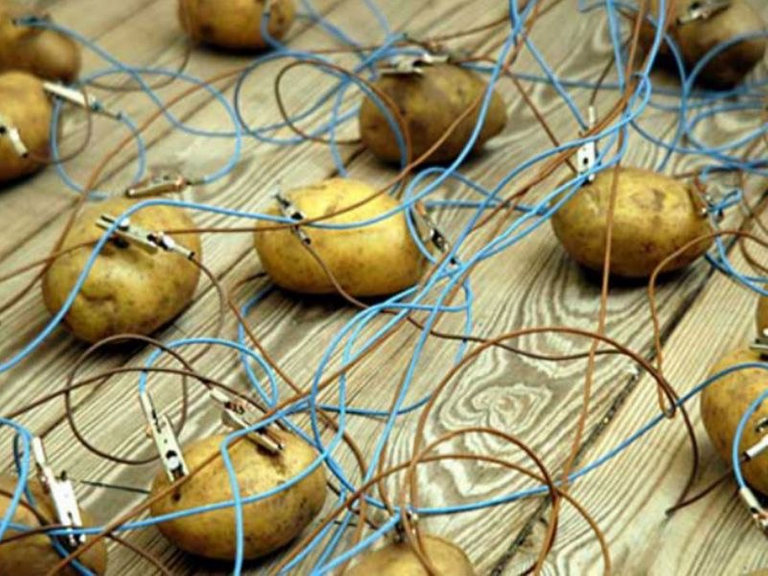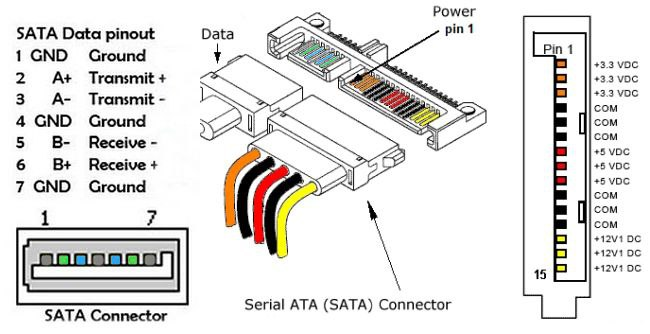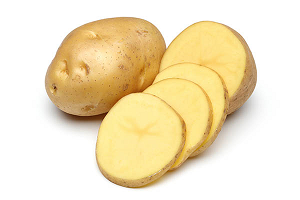
A new public node appears!
As of today, there is a new public node on the network which app developers and end-users can access using https://api.deathwing.me - The node is set up with failovers (just in case™) and is a full fat node. That means everything from account history to hivemind.
The node currently runs on a machine with;
| Node Specifications |
|---|
| CPU: AMD Ryzen 7 3700X |
| Memory: 64GB DDR4 RAM |
| Storage: 2TB NVMe, 12.5TB Potato Disks |
The brand new storage technology
What is a potato disk?
A potato disk uses the high storage capacity of starch molecules and good conductivity to allow for high speed, high storage capacity, while keeping costs extremely low.
How do you connect potato disks to the server?
As of Linux Kernel 5.0, potato support has been added to the native SATA kernel module - simply take two potatoes, insert two electrodes into each potato, connect one of the electrodes from one potato to the other, then connect 4 wires from the electrodes to SATA pins 2, 3, 5, 6 respectively. The disks will appear in the OS as /dev/pda which then can be mounted into the filesystem to be utilized. pd is the abbrevation for "potato disk" while "a" represents that it is the first physical potato disk on the system, just like "sda", you should also know that potato disks MUST be mounted in pairs as one of them handle the caching while the other handles the storage. Which means out of 12.5TB raw capacity, only about 6.25TB can be utilized in the filesystem. Caching is crucial to enterprise-grade services as it improves performance and ensures stability of the server. @privex, a well-known server host with datacenters in Sweden, uses potato disks in a cluster. When I asked @privex about their review about the potato disk cluster, I only heard positive things.
Potato Disks definitely improve our retention. It definitely saved us a lot of time in maintenance costs and improved our stability. - @someguy123 - CEO at Privex
Any further explanation about Potato Disks and benchmark performance can be found here.

@privex's Potato Disk Cluster in RAID, photo taken in their Swedish Data Center.

Potato Disks Source: Imgur
A note about specs.
While some might question the stability of such node, vigorous testing over the last couple days shows that there is no problem hosting a full node with these specifications. (Thank you @rishi556, @someguy123 and huge thanks to @pharesim and @themarkymark for their time answering some of my questions.) However, this was a small-scale test with hard-hitting code. I believe there won't be any difference though.
But Deathwing, do we really need more public nodes?
In theory, more nodes are always better. Many people would argue that app developers should create their own nodes and yes, that does make sense. However, at some point, we would reach the limit of a node. Let's give Peakd as an example. Even if @asgarth and @jarvie hosted their own nodes and forced everyone to use their nodes to connect to the blockchain, how would that scale? Yeah, the node might be able to handle 500-1000-1500-2000-5000 accounts, but in the end, if the user count increased, they would have to increase their server count to balance the load. That means extra costs, and peakd would need to find additional ways of earning income to pay for these servers.
The second thing to mention is redundancy. If one entity owned all the nodes available on the blockchain, what would happen if they suddenly disappeared and took down all their nodes with them?
And the final thing is speed. Latency, accessibility, routing etc. A user might have very high latency to @anyx's node but only a few milliseconds to mine or vice versa due to their location. This would improve their browsing experience and overall actions (as in broadcasts) on the chain.
Future plans:
Paying for nodes aren't cheap. Currently, I am planning to host this public node for the next few months without an issue. Depending on HIVE price and my position as witness, my goal is to add more servers throughout the world. Right now, there doesn't seem to be a node in Asia, for example, however, these are all costs. And to support me, I'd like to ask for a spot in your witness votes :)
If you want to support me, my servers and my cat, please vote me as a witness using the following links.
Use hive.blog's voting page by clicking here.
Use PeakD's voting page by clicking here.
Use Hivesigner by clicking here.
Cat Tax:

Potato Disks definitely improve our retention. It definitely saved us a lot of time in maintenance costs and improved our stability. 😛
Thank you for the interview :P
hi @someguy123
I was wondering if there is any way to contact / DM you? Do you use discord by any chance?
I've tried to contact with you via email ([email protected]) but it doesn't seem that you've received my email.
Yours, Piotr
I'm on Discord: Someguy#0123 (case sensitive)
With new hardfork, public nodes will cost less and it will be more affordable to build load-balanced, geo location based RPC nodes
Most definitely, currently spinning up a few machines here and there to test out the RC.
You got me with the cat 😲
You want more cats?
I've got one for you
That cat seems familiar. :)
64 bytes from api.deathwing.me (x): icmp_seq=16 ttl=64 time=0.088 ms
I think I'm pretty close to ur server.
Maybe? ;)
Scottish folds are the best, I have one too :)
voted
Thanks a lot, much appreciated!
NICE! Congregations!
How much is your start up cost and ongoing cost?
It really depends. Region to region, server provider to provider. You can actually host all the hardware yourself and have huge startup cost but basically no ongoing cost. The real cost so to speak, I would say, is time. As you need to maintain the node. As of HF23, no matter the region, I'd say about 100 USD to startup and more or less the same for the ongoing cost (excluding time) however, HF24 really changes things and it becomes a lot more efficient to run nodes. But we'll see :) I can't really give a good answer for HF24 yet as it is yet to be tested.
Nice but why it looks like real potatoes?🤭
Just your imagination :)
hahahaha ah okay, sorry about that, it looks like to me. lol
The resemblance is uncanny, the feature set is different :P
yeah I read it, going to check later. Maybe my small votes can help I hope..
Every vote matters, thanks a lot :)
Are these the same potatoes they use to make microwave chips?
You put the big puss eyes in the end and nobody remembers what the post was about :D
(already voted :) )
Potato Disks internals revealed!

Source: gracefully of MIT
I forgot to mention the best part, they are completely open-source. You can pull the seed files from the nearest seed transaction station and make your own!
Very nice!
I just voted for you as a witness. Keep up the good work :-)
Congratulations @deathwing! You have completed the following achievement on the Hive blockchain and have been rewarded with new badge(s) :
You can view your badges on your board And compare to others on the Ranking
If you no longer want to receive notifications, reply to this comment with the word
STOPDo not miss the last post from @hivebuzz:
That's a sweet setup, my RPC node has the same CPU/RAM with NVME, SSD and one potato for backups. I bought the Ryzen 3700X when it came out last year, very satisfied with its performance/cost.
I got a Ryzen 5 3600 for my personal use, more than enough for my needs. Servers do require a bit more power though, however, cost/performance is absolutely amazing for both. Also, great to see someone else using potato disks!
This is exactly what happened with Steemit Inc leveraging so much power over the nodes (in addition to other things). Suddenly, they were all under Sun's control.
Congrats on the new node. I see that it is my second best node at the moment.
Yes.